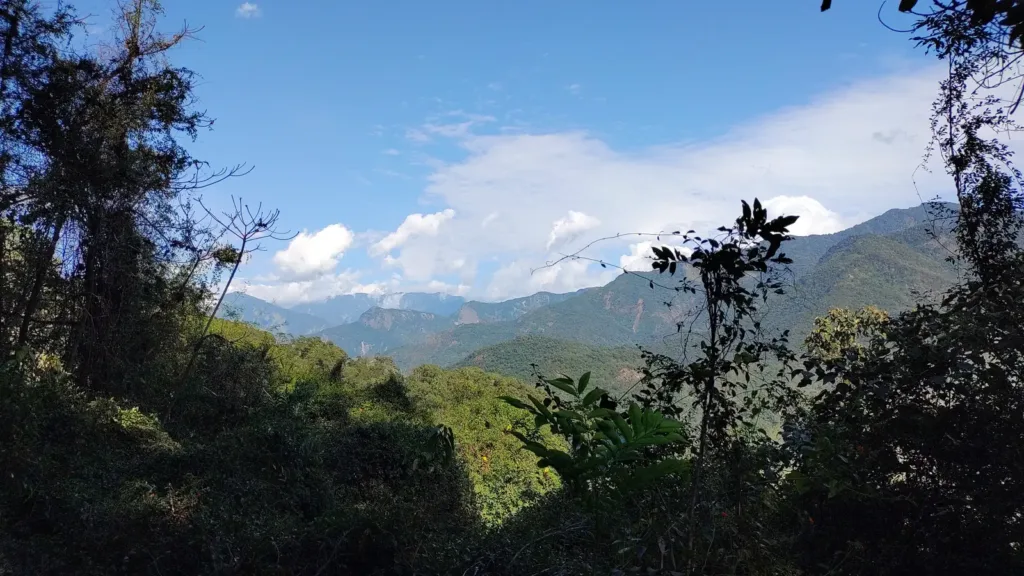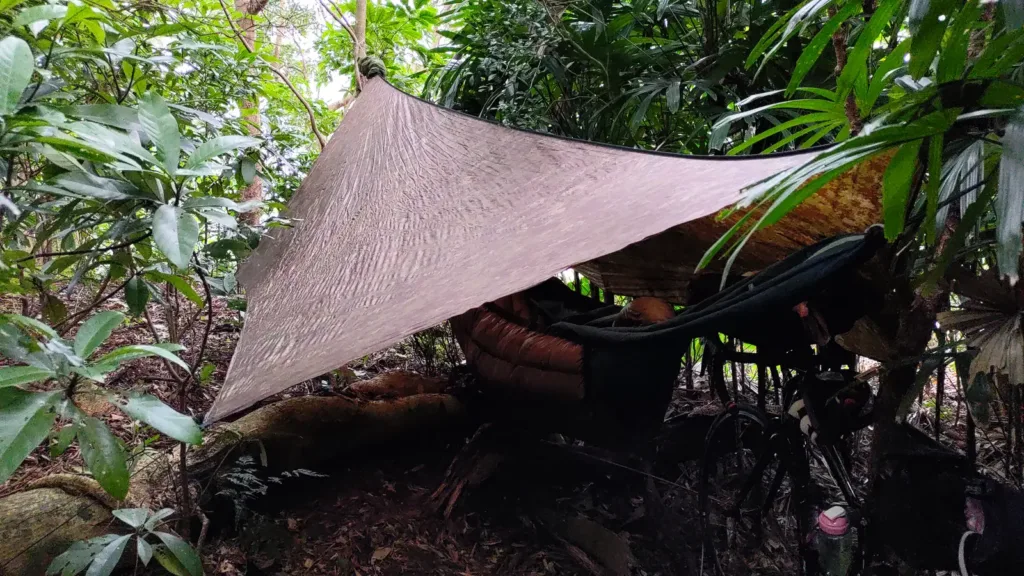Why low base weight matters
This post may contain affiliate links. This means that we may receive a small commission from purchases through those links. Read more in our affiliate disclosure.
Can you imagine carrying a house on your back? Sounds preposterous, doesn’t it? Yet, when we pack our hiking backpacks, we’re essentially doing just that—lugging around our basic needs. Now, what if I told you that house could weigh less than your beloved family pet?
In the realm of outdoor pursuits, base weight refers to the combined weight of all the gear and supplies in your backpack, excluding consumables like food, water, and fuel. It includes everything: your shelter, sleeping bag, clothing, cooking gear, first aid kit—yes, even that paperback novel you can’t hike without. Lowering this base weight, essentially, is the essence of ultralight backpacking.
Why does base weight matter, you might wonder? Well, picture yourself trekking along rugged trails, traversing breathtaking landscapes, and conquering awe-inspiring peaks. Now, imagine doing all of that with less physical strain, increased mobility, and a newfound sense of freedom. That’s precisely where the significance of low base weight shines through. By shedding unnecessary gear and embracing the ultralight philosophy, you unlock a world of advantages that can profoundly impact your outdoor adventures.
- Introduction
- Advantages of Minimizing Weight
- The Freedom to Explore Off-The-Beaten-Path Destinations
- Increased comfort during long-distance hikes
- Reduced Physical Strain and Risk of Injuries
- Opportunities for Faster Pace and Increased Mileage
- Achieving a Low Base Weight
- Choosing lightweight and durable gear
- Evaluating multi-purpose items and reducing redundancy
- Streamlining clothing and personal items
- Embracing minimalist shelter and sleep systems
- Considering ultralight cooking and hydration solutions
- Balancing Comfort and Safety
- Identifying Personal Comfort Thresholds
- Prioritizing Safety and Emergency Preparedness
- Incorporating Lightweight Alternatives Without Sacrificing Essentials
- Tips for Transitioning to Ultralight
- Gradual Reduction of Base Weight to Find a Comfortable Balance
- Conducting Thorough Research on Lightweight Gear Options
- Planning and Practicing in Advance to Ensure a Smooth Transition
- Seeking Advice from Experienced Ultralight Hikers
- My ultralight story
Advantages of Minimizing Weight
The Freedom to Explore Off-The-Beaten-Path Destinations
Reducing your base weight gives you wings—almost. When your backpack is lighter, every step becomes easier and more fluid. It liberates you from the constraints of well-trodden paths, and gives you the freedom to venture into more challenging, less visited terrains. Trust me, there’s nothing like finding your own private, verdant paradise.
Increased comfort during long-distance hikes
Less weight equals less pain—simple as that. With a lighter pack, long-distance hikes feel less like a torturous slog and more like the refreshing, invigorating experience they should be. The reduced load on your back and joints translates to less fatigue, fewer aches, and a greater overall comfort level throughout your journey. You’ll find that you can maintain a steady and enjoyable pace, appreciating the landscapes and immersing yourself in the rhythm of the trail without being weighed down by excessive gear.
Reduced Physical Strain and Risk of Injuries
Less weight reduces the chances of sprained ankles, aching knees, and that dreadful back pain that often accompanies heavy packs. After all, the wilderness is more enjoyable when you’re not wincing with each step.
Opportunities for Faster Pace and Increased Mileage
A lighter pack can mean faster strides and longer trails. If you’ve always wanted to push your limits, reducing your base weight can be the key to unlocking that potential. Imagine embarking on an extended thru-hike or embarking on a multi-day expedition into uncharted territories. With a lower base weight, you have the freedom to carry more food, water, and supplies, allowing you to venture further and explore remote destinations that would have otherwise been out of reach.

Achieving a Low Base Weight
Choosing lightweight and durable gear
One of the key elements in achieving a low base weight is selecting lightweight and durable gear that doesn’t compromise on performance. From backpacks and tents—or hammocks!—to sleeping bags and cooking equipment, every item in your pack should be carefully evaluated for its weight and functionality. Look for materials like high-quality ultralight fabrics, carbon fiber, and titanium, which offer excellent strength-to-weight ratios. Opt for minimalist designs that eliminate unnecessary features and prioritize functionality without sacrificing durability. When it comes to your backpack, consider models specifically designed for ultralight hiking, with lightweight frames and suspension systems that distribute weight efficiently. Seek out ultralight tents that use innovative materials and designs to strike a balance between weight savings and comfort.
Evaluating multi-purpose items and reducing redundancy
Do you really need a separate pan and pot? Probably not. Look for multi-purpose items that can serve several functions, saving space and weight, such as a lightweight quilt that doubles as a blanket during breaks or a trekking pole that converts into a tent pole for your shelter. Minimize duplications and focus on essentials. Cutting down on unnecessary items not only reduces weight but also simplifies your pack organization and enhances efficiency on the trail.
Streamlining clothing and personal items
Your clothing choices play a vital role in achieving a low base weight. Embrace the layering system, opting for lightweight, moisture-wicking base layers, insulating mid-layers, and weather-resistant outer shells. Look for high-performance fabrics that are lightweight, quick-drying, and offer good breathability. Consider the versatility of each clothing item, ensuring they can be mixed and matched for various weather conditions.
When it comes to personal items, be mindful of the essentials. Minimize toiletries to the absolute necessities, choosing lightweight, travel-sized containers. Consider alternative hygiene options such as biodegradable wipes that can serve multiple purposes. Remember, every gram counts, so evaluate each item’s weight and determine if it’s truly indispensable for your comfort and safety on the trail.
Embracing minimalist shelter and sleep systems
Your shelter and sleep system can significantly impact your base weight. Opt for ultralight tents, hammocks or shelters that strike a balance between weight, weather protection, and comfort. Freestanding tents may offer convenience but tend to be heavier, while trekking pole-supported shelters can save weight and provide a minimalist camping experience. Consider the specific conditions you’ll encounter on your trips and choose a shelter that suits your needs.
When it comes to sleep systems, lightweight sleeping bags or quilts paired with ultralight sleeping pads offer a comfortable and compact solution. Choose insulation materials that offer a good warmth-to-weight ratio—the best choice here is down—and consider the temperature ratings that align with your intended hiking seasons. Experiment with different sleep systems to find the right balance between comfort and weight savings.

Considering ultralight cooking and hydration solutions
Food and water are essential for any outdoor adventure, but they can also add considerable weight to your pack. Opt for lightweight, calorie-dense meals that require minimal preparation. Consider dehydrated or freeze-dried options that are lighter and take up less space. Some people prefer not to lug cooking equipment around; but if you do prefer a warm meal—you’d be surprised at the power of a small, ultralight stove.
For water, evaluate your hydration system and choose lightweight solutions like collapsible water bottles or hydration bladders. Be mindful of water sources along your route, allowing you to carry smaller amounts when necessary. Additionally, consider lightweight water filters or purification methods that efficiently treat water without adding excessive weight.
Achieving a low base weight is a journey of continual refinement and personalization. It requires assessing your specific needs, preferences, and the environmental conditions you’ll encounter. In the next section, we’ll explore the delicate balance between comfort and safety when pursuing a low base weight, ensuring that you make informed choices that prioritize your well-being while still reaping the rewards of a lighter load.
Balancing Comfort and Safety
Identifying Personal Comfort Thresholds
Now, as someone who treks for miles in sandals—much to the astonishment of fellow hikers—I can vouch that comfort is a highly individualistic thing. What feels right to me might be a discomfort for you. It’s imperative that you identify your personal comfort thresholds before embarking on the ultralight journey. I’ve found myself shivering on a ridge, after having ditched my hefty sleeping bag in favor of a lighter alternative. It was a chilly reminder—literally—that I’d overstepped my comfort threshold!
Prioritizing Safety and Emergency Preparedness
Remember, comfort might be subjective, but safety isn’t. In the quest to reduce base weight, it’s easy to overlook the importance of emergency preparedness. Just last year, my friend Martha—eager to cut down weight—decided to leave her emergency kit behind. A sprained ankle later, she regretted her decision. A few extra ounces would’ve been a small price to pay for a safer, more assured hike. There’s a lesson here—never compromise safety when pursuing an ultralight approach.
Incorporating Lightweight Alternatives Without Sacrificing Essentials
Lightweight alternatives are a blessing. I’m especially grateful for the inventor of the compact, inflatable pillow! It’s easy to leave behind luxuries, but the essentials—shelter, food, water—must remain. They’ve invented ultralight water filters and titanium cookware for a reason. It’s about finding that balance, where the essentials remain intact, but they weigh less than a feather—or, at least, feel that way.
Tips for Transitioning to Ultralight
Gradual Reduction of Base Weight to Find a Comfortable Balance
Starting your transition towards ultralight hiking shouldn’t be a sudden leap—it should be a slow, gradual climb. Just as I had to adjust to running in sandals, you’ll need to find your balance. Reduce base weight piece by piece, hike by hike. Learn what you can live without, what you need, and what you just absolutely love having around, even if it’s just an old, paperback novel.
Conducting Thorough Research on Lightweight Gear Options
As a hiker, I’ve learned to research like a scholar. It’s the key to finding the best lightweight gear options. Read up on gear reviews, visit stores—virtual or physical—compare products, and find what suits you best. Don’t forget about versatility. That lightweight fleece that doubles as a pillow? Gold dust!
Planning and Practicing in Advance to Ensure a Smooth Transition
You wouldn’t run a marathon without training first, right? The same applies to ultralight hiking. Plan and practice with your new gear. Try an overnight trip before tackling a week-long expedition. Familiarity and comfort with your gear will make your transition much smoother—and more enjoyable.
Seeking Advice from Experienced Ultralight Hikers
Every seasoned ultralight hiker—myself included—has a wealth of wisdom to offer. We’ve made our fair share of mistakes, missteps, and mishaps. Reach out, ask for advice, and take it. It’ll save you from repeating our misadventures, although they do make for some interesting campfire stories!
My ultralight story
Years back, on the rugged terrain of the Pacific Crest Trail, my backpack felt like I was carrying a boulder. My knees ached, my shoulders were sore, and I felt like Sisyphus—cursed to carry an immense weight. That’s when I decided to go ultralight. My first attempt was a disaster—I was cold, hungry—and I missed my bulky sleeping bag immensely. It was a test, a lesson. Gradually, I figured out my threshold, discovered my balance.
There’s something profoundly transformative about carrying all you need on your back—no excess, no frills. Each piece of gear you carry has purpose, each item a story, each choice a consequence. This bare-bones approach enhances the intimacy of your relationship with nature—it’s just you, the trail, and the elements. Unnecessary barriers shed, trivial concerns melt away.
I’ve come to love ultralight hiking, not just for the freedom it gives me to explore, the increased distances, the reduced physical strain, or even the quiet simplicity it brings. For me, it’s about the sense of harmony with nature—a careful negotiation, a respectful give-and-take. It’s an affirmation that we can stride across this beautiful, verdant world without leaving heavy footprints.
Going ultralight is more than just an attempt to shed physical weight; it’s a philosophy, a lifestyle that advocates for respectful coexistence with nature while celebrating our own strength and resilience. It’s an invitation to be better stewards of the world we inhabit and to cherish the unadorned, honest simplicity of life on the trail.




